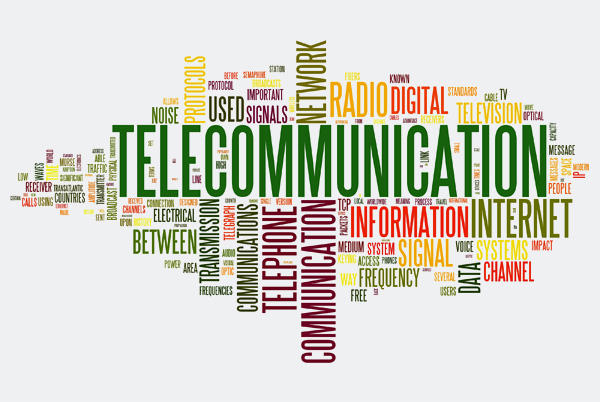Advantages and Disadvantages of Telecommunication
Advancements in telecommunication technologies have greatly impacted on the way people interact with one another at the global level. Nowadays,individuals and businesses can communicate easily through voice calls,video calls and data sharing applications. Businesses have particularly taken advantage of teleconferencing,video conferencing and video calling systems to steer collaboration among employees. By adopting a sophisticated telecommunication system,many businesses have realized improved productivity,better customer service and increased growth.
However,the telecommunication technology comes with a fair share of its own challenges. From the high costs of acquiring telecommunication equipment to system breakdowns all through to latency problems,there are many problems associated with adopting these systems. In this article,we are going to look at the advantages and disadvantages of telecommunication and how each of them affects business operations.

Advantages of Telecommunication to Business

Easy & Free Online Meetings
Free for up to 100 Participants
Fluent Group Video/Audio/IM Chat
Screen Sharing and Annotation
White Board and Collaboration
Record and Playback
Free to Start Now
1. Improve Efficiency
The latest telecommunication devices and networks have made it easier for employees to send and receive data from different locations in real-time. A business can even share information with customers,suppliers and partners via a live video feed. All these players can connect and interact through voice calls,e-mails and video conferences among other platforms.
Video conferencing solutions,like ezTalks Cloud Meeting allow a business to host up to 100 participants in a meeting for free,which allows employees to discuss important work related issues conveniently. There's no need to book flights,hotels or meeting venues. Everything is done over a virtual meeting space. That improves efficiency in the execution of important company projects while reducing on costs of operation.
2. Inspire Collaboration
Telecommunication is an important aspect when it comes to executing cross-team collaboration in a company or organization. With the use of technologies,such as video calling,video conferencing and telepresence video streaming,employees working in different departments or separate locations can work together quite effortlessly. For instance,ezTalks Cloud Meeting offers solutions that can allow employees to enjoy live streaming of HD video and audio in a video conference system. While on it,meeting participants can share files,screens and applications instantly.
ezTalks Cloud Meeting also comes with interactive whiteboards that allow for sharing,editing and saving of important files related to a project. With such a form of collaboration,employees will engage in detailed and meaningful discussions which will inspire better performance on any given project.
3. Bring Flexibility to the Workplace
Telecommunication offers a range of flexible work options which company employees can adopt. With the use of video conference and video calling systems,employees can work from home or join in any corporate meetings from anywhere at any time. Access to a video conference can be done from a PC or mobile device. That eliminates the need to attend physical meetings or manual visit offices to get the work done.
Employees carrying out computer-based tasks can particularly enjoy working from home as they can finish tech projects online from anywhere. Even when carrying out team collaboration with other employees from different departments,they can gladly do so over a video conference or telepresence system.
4. Save Time
With the use of video calls and video conferences,inviting people to join in a virtual meeting space is a matter of minutes. All the host needs to do is invite attendees through email or video call them on their smartphones. That way,finding and connecting employees based in different locations can be convenient and hassle-free. The person hosting a meeting can determine the persons who are available online by checking on their presences. Most telecommunication platforms allow users to post messages on their accounts to indicate the status of their presence like busy,free for calls,away and more.
Disadvantages of Telecommunication to Business
1. Eliminate Face-To-Face Contact
Adopting telecommunication systems may allow company employees to interact from different locations,but it doesn't offer colleagues a chance to enjoy a one-on-one talk. Most of the meetings held over video conference systems are mostly business or project oriented and do not allow for socialization. That increases bad relationship at work,something that may affect business performance in the future.
2. Increase the Communication Costs of a Company
Acquiring and setting up telecommunication equipment and/or software may require a huge budget. Right from high-quality webcams to huge LCD screens all through sophisticated video conferencing software,a business can really spend a lot in getting everything set up. And before officially introducing the system to the business,it might be necessary to train employees on how to use the new communication technology. That may mean even more spending. And not forgetting the enormous costs associated system maintenance. In essence,setting up a telecommunication system might bring convenience and flexibility,but it may lead to increased costs in the long run.
3. Lead to Isolation between Employers and Their Employees
The use of telecommunication systems has encouraged many employers and employees to adopt the telecommuting or work-from-home job format. This mode of working keeps employers and employees apart,something that might hurt the performance of a business. Though most companies organize for physical meetings periodically,it's still not enough to address the underlying work issues.
When colleagues are working apart,they won't have extra time to share professional ideas or office gossip. Interaction is hugely embedded on computer or online based systems,which during breakdowns can cut the connection between colleagues. And since telecommunication systems cost lots of data bundles to run,there can be a limit to the extent at which employees interact. That may lead to partial or even complete isolation among employees and/or employers.
4. Increase Vulnerability to Information Hacking and Attacks
One of the major problems associated with the use of telecommunication systems is security attacks. With sensitive data being transmitted and shared over the Internet and other networks,there's a possibility people will try to hack it either for their own pleasure or for use by the competition. And in order to counter that,system users might need to update passwords periodically or invest in advanced data encryptions. That makes communication through video conferences,teleconferences and video calls,unsafe and costly to a larger extent.

.
Conclusion
While telecommunication technology comes with lots of juicy benefits,there are underlying problems and challenges that need to be sufficiently addressed. Before adopting a telecommunication system,a business should look into its advantages and compare it with its drawbacks. Getting everything right will allow the business to take advantage of the benefits of these communication systems while preparing adequately to face the challenges. Generally,telecommunication is not bad,it only requires a business to be smart when adopting a specific telecommunication technology.